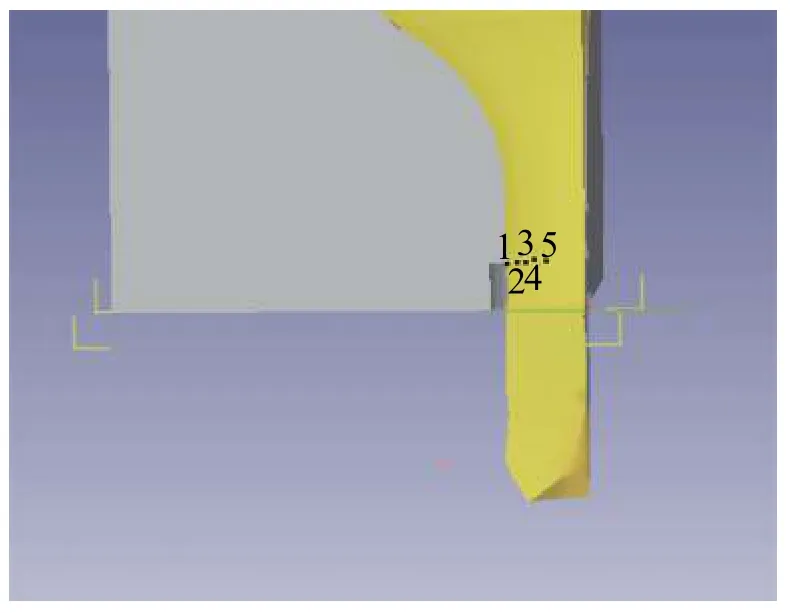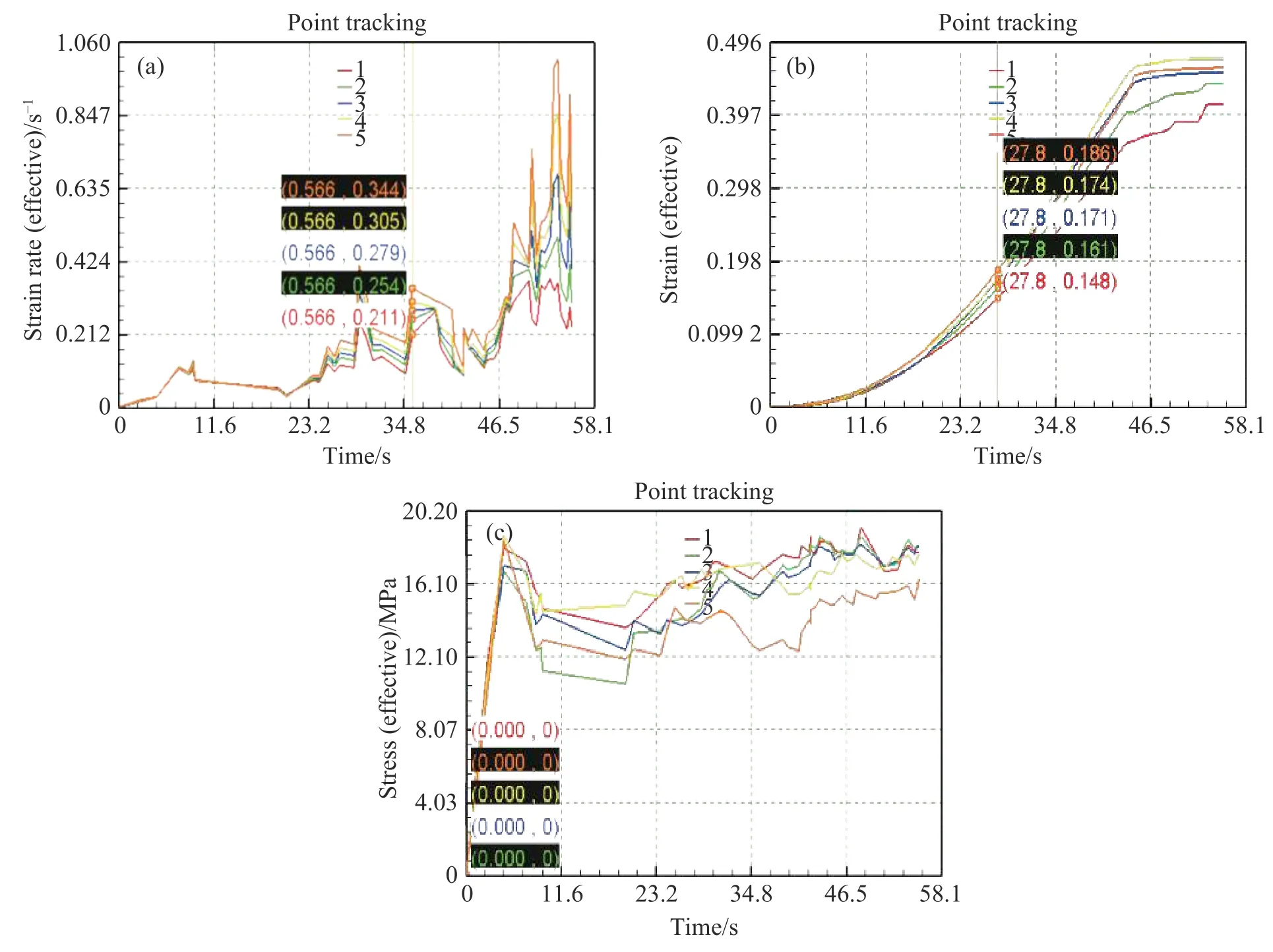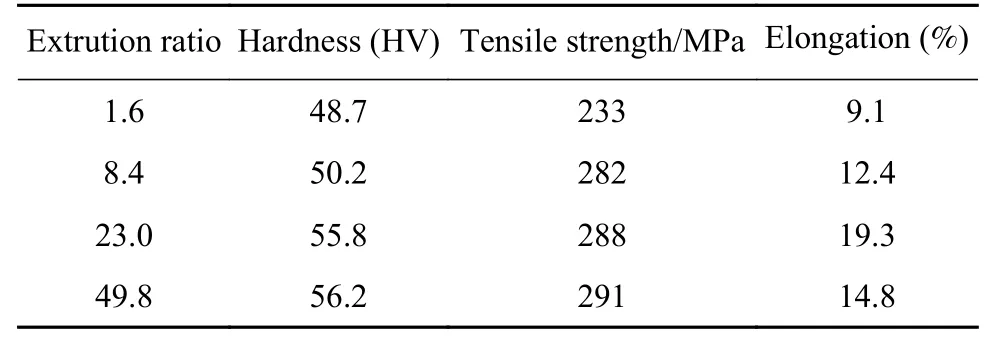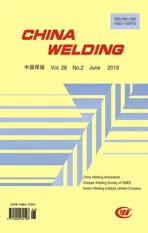Extrusion process and property of AZ31 magnesium alloy
2019-10-22TanMingQuanGaofengLiuZhaoming
Tan Ming , Quan Gaofeng , Liu Zhaoming
谭明,权高峰,刘赵铭
1.School of Material Science &Engineering,Dalian Jiaotong University,Dalian 116028,China;
2.School of Material Science &Engineering,Southwest Jiaotong University,Chengdu 610063,China;
3.Yangzhou Chende Heavy Industries Co.,Ltd,Yangzhou 225000,China
Abstract The microstructure and mechanical properties of extruded AZ31 magnesium at different extrusion temperature were investigated.The results show that,at 380 ℃,when the extrusion ratio is 23,the AZ31 magnesium alloy has a dense recrystallized microstructure and good mechanical properties.On one hand,if the extrusion ratio is too small,grain crushing effect is not obvious,and part of the grain is not dynamic recrystallization.On the other hand,larger extrusion ratio can lead to grain growth and banded structure.Tensile fracture characteristics of extruded AZ31 magnesium alloy is quasi-cleavage.
Key words AZ31 magnesium alloy,extrution ratio,simulation,microstructure,property
0 Introduction
Magnesium (Mg) alloys have been used in transportation,communications,electronics and aerospace fields etc.,and have become the focus concerned by all the countries in the world[1-2].The major problem for the application of the magnesium alloys is their poor workability at room temperature due to the insufficient number of slip systems in magnesium crystal[3-4].Mg alloys are attracting more and more attention for their high specific strength,high specific modulus,good electromagnetic radiation absorption and abundant reserves.
As an important processing technology,the extrusion is the key for the spreading use of magnesium alloys,and an economical way to produce sectional materials that can be developed into structural components[5-6],it can refine the grain size,improve the distributed uniformity of solidified structure,and increase mechanical properties[7-8].Various conditions influence different result.Therefore,the effect of extrusion ratio on the microstructure and property of AZ31 magnesium alloy has been studied in this article.
1 Experimental
The material of the experiment is casting AZ31magnesium alloy.Specimen dimentions are ϕ125 mm×200 mm.Table 1 shows the base metal compositions.
extrusion process parameters:The extrusion temperature is 380 ℃,mould temperature is 360 ℃,extrusion speed is 0.5 mm/s,extrusion ratio are 8.4,23 and 49.8 respectively.
As shown in Fig.1.The finite element software Deform-3D is used to simulate the strain rate and stress during the extrusion process.Five tracing points were selected near the calibrating strap to study the stresses and strains.In this experiment,optical metallographic observation(Carl-Zeiss),scanning electron microscopy (JSM6480) observation were carried out on the microstructure and mechanical properties of the alloy after extrution.
2 Results
2.1 Simulation of extrusion process
Curves of different extrusion ratio of strain,stress and strain rate are showed in Fig.2-Fig.4,As shown in Fig.2-Fig.4,the strains generally increase during the extrusion process.The strain and stress increase at the beginning of the extrusion due to the mould filling.It produces uniform strain due to the automatic remeshing of the software Deform-3D,and generates a serrated curve,and then enters into the stable stage.

Table 1 Chemical compositions of AZ31 magnesium alloy(wt %)

Fig.1 The tracing points on extrusion products(point 1 to point 5)
When extrusion process is nearly over,the stress increases rapidly due to the drop of billet temperature and the sharp increase of friction.The stress and non-uniform deformation increase with increased extrusion ratio,especially when the extrusion ratio is 49.8.
The curves of strain rate are also serrated,and increase at first,and decrease rapidly due to the end of deformation.As the curves of extrusion shown,the variations of the strain and stress are more smooth under the extrusion ratio of 23 than those of the extrusion ratio are 8.4 and 49.8.It is beneficial to improve the deformation uniformity of material.So,when extrusion temperature is 380 ℃,mould temperature is 360 ℃,extrusion speed is 0.5mm/s,extrusion ratio is 23,the extrusion process parameters are reasonable.

Fig.2 Curve of extrusion ratio of 8.4 (a) Strain rate (b) Strain (c) Stress

Fig.3 Curve of extrusion ratio of 23 (a) Strain (b) Strain rate (c) Stress

Fig.4 Curve of extrusion ratio of 49.8 (a) Strain (b) Strain rate (c) Stress
2.2 Metallographic structure
The microstructures on the cross section of different extrusion ratio were shown in Fig.5.

Fig.5 Optical microstructures of AZ31 magnesium alloy in different extrusion ratio (a) λ=1.6 (b) λ=8.4 (c) λ=23 (d)λ=49.8
When the extrution ratio is 1.6,the grain size is strongly uneven and there are many large size grains.When the extruion ratio up to 8.4,the grain size is much smaller but there are still some large size grains,so within certain limits,due to the small extrusion ratio (λ=1.6 and λ=8.4),the as-cast microstructure is not fully being broken down.When the extrusion ratio reaches 23,the grains have a relatively uniform size due to dynamic recrystallization during deformation.And when the ratio reaches 49.8,the griam size gets larger and mixed grain appears.This kind of nonuniform grain size is mainly caused by different dynamic recrystallization behavior due to unequal strain in different locations and the excessive friction heat[9-10].So although larger extrution can fully broke down and refine the cast grians,the friction heat also can make the grain grow rapidly.The microstructural results validate the simulation of extrusion very well.
2.3 Mechanical property
Table 2 shows the mechanical properties of as-extrusion AZ31 alloy at room temperature.Based on the data in Table 2,the hardness and ultimate strength increases with the increase of extrusion rate.When extrusion ratio is too small,grain crushing effect is not obvious,part of the grain is not dynamic recrystallization,and the mechanical properties are poor.On the other hand,larger extrusion ratio can lead to grain growth and formation of banded structure.When the extrusion rate is 49.8,the elongation decreases due to the mixed crystal and banded structure.When the extrusion ratio is 23,the AZ31 magnesium alloy has a dense recrystallized microstructure and a good integrated mechanical properties.

Table 2 Room temperature mechanical properties of asextrution AZ31 alloy
2.4 Fracture mechanism
Fig.6 shows the fracture surfaces of tensile AZ31 alloys,and tensile fracture characteristic of extruded AZ31 magnesium alloy is quasi-cleavage with a number of dimples.With the increase of extrusion ratio,the number of dimples increases,and the elongation increases also,the fracture mechanisms changes from quasi-cleavage fracture to ductility fracture.

Fig.6 Fracture surfaces of tensile AZ31 alloys (a) λ=8.4 (b) λ=23
3 Conclusions
(1) Through using Deform-3D software to carry out extrusion simulation,when extrusion speed is 0.5 mm/s,billet temperature is 380 ℃,mould temperature is 360 ℃,the extrusion stress,strain and strain rate simulation curves display that extrusion process parameters are reasonable.
(2) When the extrusion ratio is 23,the AZ31 magnesium alloy has a dense recrystallized microstructure and good integrated mechanical properties.
(3) Tensile fracture characteristic of extruded AZ31 magnesium alloy is quasi-cleavage with a number of dimples.
猜你喜欢
杂志排行
China Welding的其它文章
- Effect of heat treatment on microstructure and properties of single crystal copper cold-welded joints
- Lap joining Al5052 to Ti6Al4V by GTAW with AlSi5 filler wire
- Performance study of a complex thermal barrier functional coating with an electro-spark deposited burn-resistant layer
- The microscopic mechanical performance for nonuniform welded joint of nickel-based alloy with nanoindentation
- Welding deviation detection method based on weld pool image contour features
- Interface microstructure and properties of submerged arc brazing tin-based babbit
